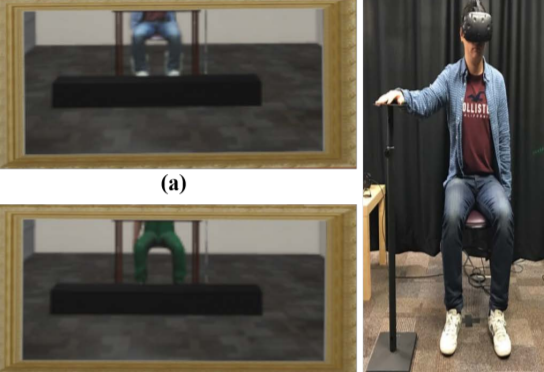RealME: the influence of body and hand representations on body ownership and presence
PubDate: October 2017
Teams: University of Central Florida;Nara Institute of Science and Technolog
Writers: Sungchul Jung;Christian Sandor;Pamela J. Wisniewski;Charles E. Hughes
PDF: RealME: the influence of body and hand representations on body ownership and presence

Abstract
The study presented in this paper extends earlier research involving body continuity by investigating if the presence of real body cues (legs that look like and move like one’s own) alters one’s sense of immersion in a virtual environment. The main hypothesis is that real body cues increase one’s sense of body ownership and spatial presence, even when those body parts are not essential to the activity on which one is focused. To test this hypothesis, we developed an experiment that uses a virtual human hand and arm that are directly observable but clearly synthetic, and a lower body seen through a virtual mirror, where the legs are sometimes visually accurate and personalized, and other times accurate in movement but not in appearance. The virtual right hand and arm are the focus of our scenario; the lower body, only visible in the mirror, is largely irrelevant to the task, providing only perceptually contextual information. By looking at combinations of arm-hand continuity (2 conditions), freedom or lack of it to move the hand (2 conditions), and realism or lack of it of the virtually reflected lower body (2 conditions), we are able to study the effects of each combination on the perceptions of body ownership and presence, critical features in virtual environments involving a virtual surrogate.
